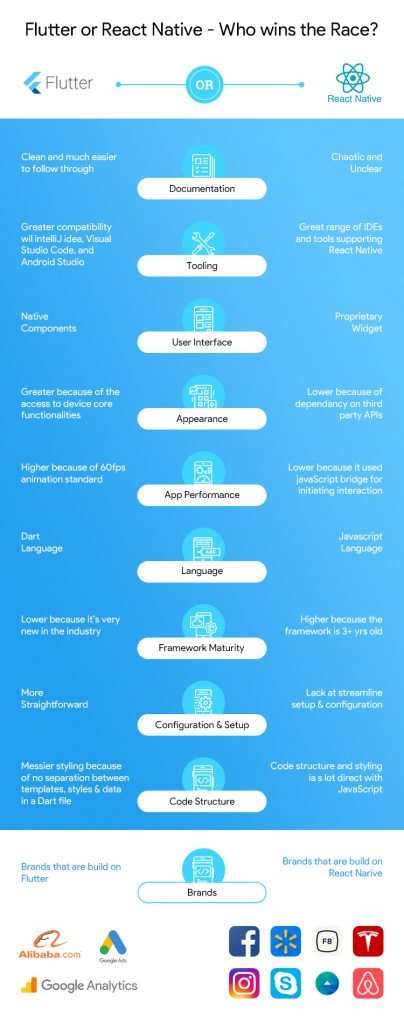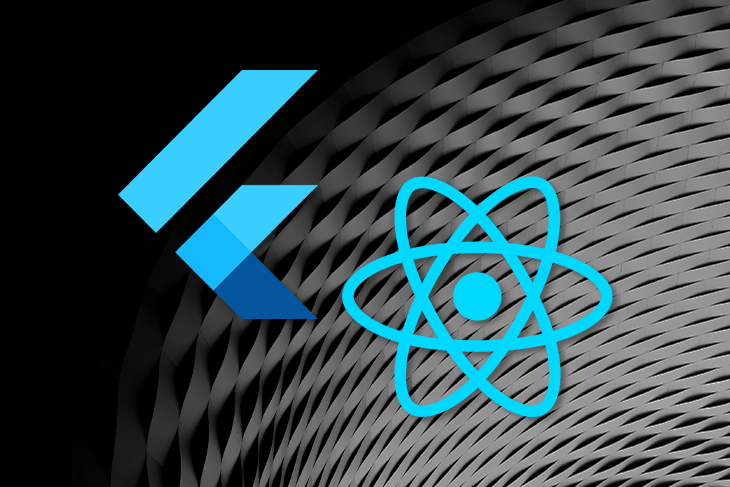

- Flutter vs react native 2018 update#
- Flutter vs react native 2018 full#
- Flutter vs react native 2018 code#
Flutter vs react native 2018 code#
This allows developers to see their code changes instantly. A hot reload feature is available on both platforms.Flutter uses pub while React Native uses npm. Both frameworks offer packages to extend functionality.

An incredible amount of educational resources are available for both frameworks.Code is easily reused between web and mobile projects.React Native has been on the market longer (over six years).

Flutter vs react native 2018 full#
Flutter vs react native 2018 update#
Fortunately, the Flutter team is quick to update the libraries. The downside to Flutter’s approach is that the “old” UI is still used after major OS updates. The result is that the user doesn’t realize (or care) that they’re not seeing native UI elements. Both of these libraries adhere to their respective design standards. You can make native interfaces using the Material Design and Cupertino widget libraries. This can reduce the need for new releases, but also has the potential to break your application.įlutter renders every widget from scratch on your screen. When those elements change as part of an operating system update, your app updates as well. React Native uses the native UI components included in iOS and Android. The deciding factor here is likely the skillset of your developer team. The answer is simple: Dart provides the flexibility of an interpreted language while offering compiled performance.īoth languages have benefits and drawbacks. One question the Flutter team is often asked is why did they choose Dart over JavaScript. If its loosely typed nature is a concern, then TypeScript is also a compatible option. JavaScript is one of the best-known programming languages. There are many proven design patterns that have stood the test of time work well with Flutter projects. It's easy to learn for developers who have used similar languages like Java, Swift, Kotlin, and C#. JavaScriptĭart is a strongly typed language that uses classical inheritance. Like Flutter, React Native offers an official showcase. Popular applications that use this framework include Instagram, Facebook, Skype, Pinterest, or Afterpay. This is unlike Ionic and Cordova, which are wrappers for web apps. Please note that React Native apps are actually native apps. This is because React Native uses JavaScript and shares its architecture with React. It enables cross-platform development across the following platforms:Īdditionally, it's easy to port React Native apps to the web. What is React Native?Ĭreated by Facebook, React Native saw its first preview release in 2015. For more examples, be sure to check out the “It’s All Widgets” showcase. Many of the leading companies are using Flutter for mobile development, such as Tonal, Signify/Philips Hue, Google, Alibaba, and more. Later you can customize every widget so it’s a perfect fit for your brand. It’s easy to launch an MVP using the expansive widget catalog. It’s performant and very easy to learn.Īdditionally, Flutter is useful for creating beautiful customized UI experiences. This is a strongly typed object-oriented programming language with classical inheritance. Flutter allows you to deploy applications to the following platforms:įlutter apps are written in Dart. What is Flutter?Ĭreated by Google, Flutter saw its first beta release in February 2018. So what’s the right choice for your project? Well, the answer is “it depends.” They have different strengths and weaknesses, which we'll explore in this article. Two of the biggest frameworks are Flutter and React Native, both with a ton of buzz around them. Cross-platform frameworks have changed everything: thanks to them, developers can now ship performant apps across many platforms with a single codebase. Congratulations! This is an exciting moment to begin building a new mobile app.


 0 kommentar(er)
0 kommentar(er)
